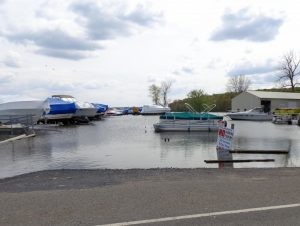Learn What Actions a Marina Can Take To Have the Greatest Environmental Impact
Cut Through the Clutter: Learn What Actions a Marina Can Take That Will Have the Greatest Environmental Impact
A growing number of marina developers are looking to take an ecocentric (or environmentally conscious) approach to the design, construction and operation of their boat facility. This article reveals the environmental issues that are the biggest concern on a global scale and offers 6 guidelines for marina owners and operators to use in making purchase and operational decisions.
Marinas operate in some of the world’s most sensitive habitats.
As environmental concerns grow, more people are wanting to take an active role in being a part of the solution.
Put these two together, and marina owners and developers are smack-dap in the middle of the world’s environmental efforts.
Population growth aside, the single biggest environmental concern is climate change. Biodiversity, water and pollution are the next big 3.
For marinas, concerns about preservation of biodiversity, water quality and pollution are real and easy to understand. Marinas encounter and deal with these environmental concerns daily.
The concept of climate change is harder to grasp. Public misinformation, extreme timelines, and a strong tendency to avoid dealing with longer-term problems leave most of the population with an attitude of indifference when it comes to the topic of climate change.
Is climate change real? If it is real, what is it and why is it a top environmental concern?
The fact is, climate change is real and it’s having a profound impact on our environment.
Rising levels of CO2 and other greenhouse gases are at the heart of climate change and are responsible for sea level rise, global temperature rise, warming oceans, shrinking ice sheets, declining arctic sea ice, glacial retreat, extreme weather events, ocean acidification and decreased snow cover.
Not only is climate change real, scientists unanimously agree that humans are influencing climate change with our production of greenhouse gases more than any natural factor. According to John Englander in his book High Tide on Main Street, “Of all the natural forces that affect temperature: solar cycles, greenhouse gases, volcanoes, and the el Niño cycles. The only one that significantly follows the trend of global temperature is greenhouse gases.”
In order to slow climate change, we must decrease our production of greenhouse gases. In order to decrease our production of greenhouse gases we must make a shift in how we live and where our priorities lie. We must spread awareness and support organizations and politicians who “get it.”
6 Guidelines for marinas for purchase and operational decisions from an environmental perspective:
- Use conservation of “energy” as your guide for decision making rather than conservation of “things”. Many “green actions” do not conserve energy, which is what we must do to reduce greenhouse gases.
- Explore options for renewable energy sources and support others who are committed to using renewable energy sources.
- Invest in building practices and materials that produce the least amount of greenhouse gases over their lifespan.
- Look to Life Cycle Assessment comparisons to judge whether one product is better for the environment than another.
- Stop using “recycling” as the holy grail for environmental stewardship. The truth is recycling does very little to address the problem of climate change. In fact, certain kinds of recycling actually use more energy than would be used to create a new product.
- Do not to let relatively easy green actions become a feel-good exercise that distract from things that could make a real difference is slowing climate change.
Even though the effects of climate change may not be seen for several generations, we all must recognize a new certainty: our coastal civilization in coming years will be totally transformed because of it.



